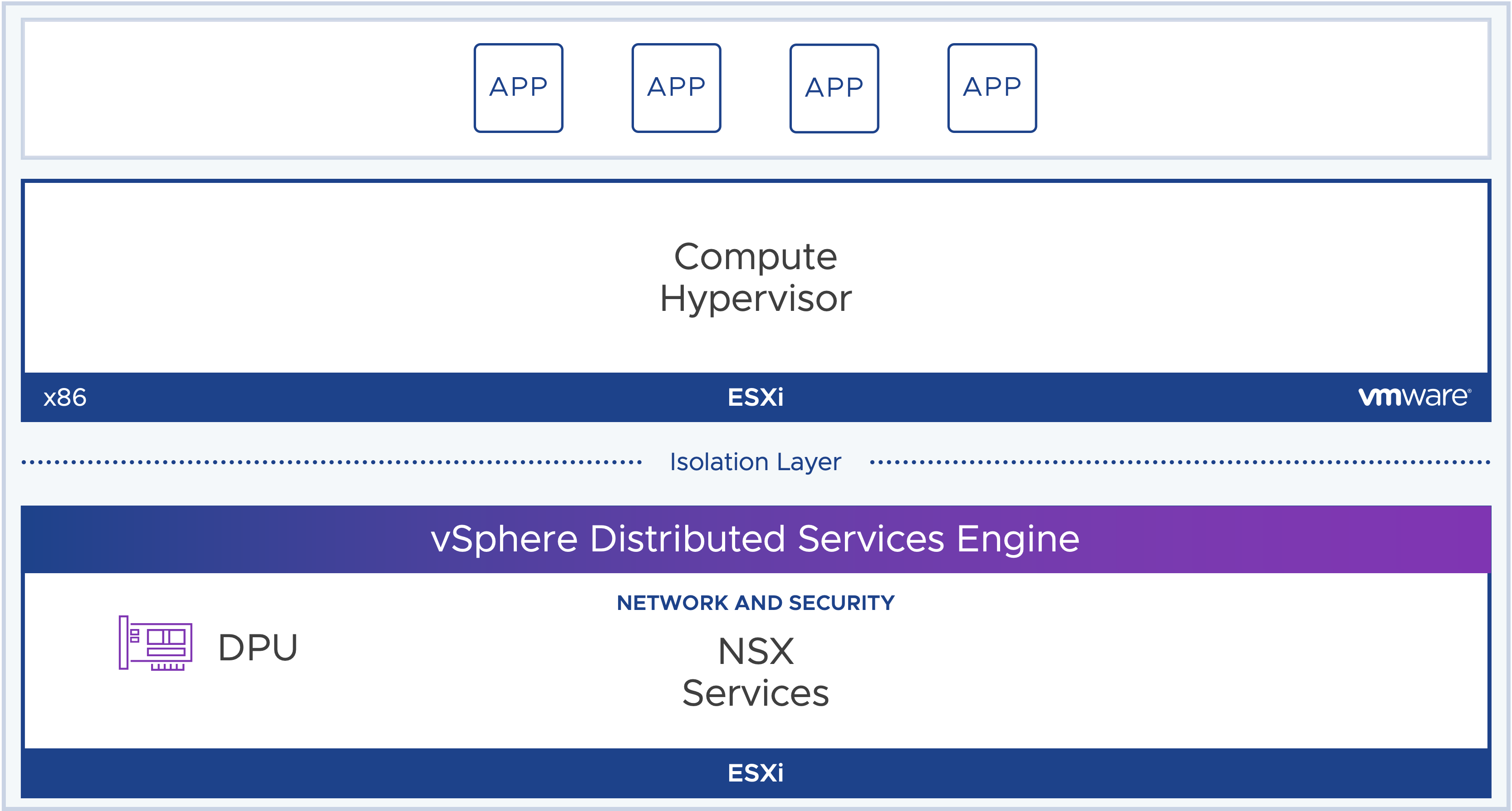
VMware vSphere 8 Enterprise platform is a powerful virtualization platform that provides organizations with the tools and features they need to ensure their IT infrastructure is secure, reliable, and scalable. It includes features such as high availability, scalability, and security. With VMware vSphere 8 Enterprise platform, businesses can quickly deploy applications and services with minimal effort and cost. The platform also supports advanced automation capabilities to help organizations manage their workloads more efficiently. Additionally, it enables organizations to take advantage of new technologies such as AI/ML to create innovative solutions for their customers.
vSphere Distributed Services Engine
In vSphere 8, an additional instance of ESXi is installed directly on the Data Processing Unit. This allows ESXi services to be offloaded to the DPU for increased performance.
In vSphere 8 GA. we support greenfield installations with support for network offloading with NSX. vSphere Distributed Services Engine is life-cycle managed using vSphere Lifecycle Manager. When remediating a host that contains a DPU ESXi installation, the DPU ESXi version is always remediated with the parent host and kept in version lock-step.
Emergence of the Data Processing Unit
Data Processing Units (DPU) exist today and live in the hardware layer, similar to a PCIe device like a NIC or GPU. Today networking, storage and host management services run in the instance of ESXi virtualizing the x86 compute layer.

vSphere with Tanzu
Tanzu Kubernetes Grid on vSphere 8 consolidates the Tanzu Kubernetes offerings into a single unified Kubernetes runtime from VMware.
Workload Availability Zones are used to isolate workloads across vSphere clusters. supervisor clusters and Tanzu Kubernetes clusters can be deployed across zones to increase the availability of the clusters by ensuring that nodes are not sharing the same vSphere clusters.
ClusterClass is a way to declaratively specify your cluster’s configuration through the open-source ClusterAPI project.
PhotonOS and Ubuntu base images can be customized and saved to the content library for use in Tanzu Kubernetes clusters.
Pinniped Integration comes to the supervisor clusters and Tanzu Kubernetes clusters. Pinniped supports LDAP and OIDC federated authentication. You can define identity providers that can be used to authenticate users to the supervisor clusters and Tanzu Kubernetes clusters.

Virtual Hardware version 20
VMware vSphere 8.0 provides VM hardware version 20. This version of virtual hardware allows you to use the latest features of the newest vSphere version

Enhanced Recovery of vCenter
VMware vSphere 8 allows you to recover vCenter 8 with the latest configuration in a cluster. It is possible because a distributed key-value stored in cluster state is used. When you restore vCenter Server from a backup, the vCenter instance will use the distributed key-value store to get the latest cluster state and configuration. The Enhanced recovery of vCenter recover state without any data loss

VMware vSphere 8 is the latest version of the popular virtualization platform, and it comes with a range of improvements and new features that make it easier to use and more efficient. With VMware vSphere 8, you can increase performance, simplify administration tasks, and speed up processes. The improved scalability allows you to create larger virtual machines and handle more workloads than ever before. Furthermore, its improved security features help protect your data from malicious actors. All these features make VMware vSphere 8 an ideal choice for businesses looking to maximize their IT resources.
I hope this has been informative and thank you for reading!




